Eleutherococcus senticosus, or Eleuthero, is an adaptogenic herb native to Russia, China, Korea, and Japan.*1
A History of Eleuthero
Interestingly, the medicinal uses of Eleuthero were unknown until Panax ginseng, due to overharvesting, became difficult to obtain. At that time, Russian scientists began screening other plants in the Araliaceae family (of which both Panax and Eleutherococcus are members) for related compounds. Eleuthero was found to have similar therapeutic effects, and became a substitute for the newly scarce Panax.2
Eleuthero was previously known as "Siberian ginseng," as it was native to the area where the studies occurred, and from the same family as Panax. Upon further study, it was determined that Eleuthero did not contain ginsenosides (considered the adaptogenic constituents of Panax), but instead contained glycosides with similar properties.
As of 2002, it is prohibited in the U.S. to use the term "ginseng"; for any plant that doesn't contain ginsenosides.3 Eleuthero is sometimes referred to as Acanthopanax senticosus or Hedera senticosus, though Eleutherococcus senticosus is most commonly used. It is known as ci wu jia in Traditional Chinese Medicine.4,5
Eleuthero as an Adaptogenic Herb*
The term "adaptogen" was coined by pharmacologist Dr. Nikolai Lazarev in 1947, in reference to Eleuthero's ability to enhance resistance to environmental stress.* Dr. Israel Brekhman further defined an adaptogen as having the following four characteristics:
- Nontoxic
- Normalizing*
- Nonspecific mechanism
- Stress protection.*6
The term has since been used to describe other herbal substances that demonstrate these qualities, such as Withania somnifera and Rhodiola rosea.*7
One of the first to study the biology of stress, endocrinologist Hans Selye wrote of General Adaptation Syndrome, commonly referred to as the stress response, and its effects on the hypothalamic-pituitary-adrenal (HPA) axis.
Hormones in the short-term response involve those from the adrenal medulla (such as epinephrine), while hormones in the long-term response involve those from the adrenal cortex (such as cortisol). While the neuroendocrine system is the most directly involved in the stress response, repetitive stressors will impact other organ systems as well.7,8
Eleuthero Benefits
Eleuthero research has focused primarily on mechanisms related to stress-protective activity.*9,10 Interactions within the HPA axis regulate the stress response, and adaptogens, such as Eleuthero, help to maintain homeostasis in the presence of stress.*11,12
The German Commission E monographs recommend a dose up to 2-3 g of dried and powered Eleuthero root and rhizome daily.13,14 Eleuthero can also be used in combination with other adaptogenic herbs. In combination, it supports cognitive parameters such as performance, speed, accuracy, and attentiveness to a task,15 as well as supports the stress response, by both subjective and objective measures.*4 According to the American Psychological Association, 77% of people in the U.S. regularly experience physical symptoms caused by stress.16
For more information and recommendations on supporting stress response, download the HPA Axis Optimization Program.
REFERENCES
- Davydov M, Krikorian A. Eleutherococcus senticosus (Rupr. & Maxim.) Maxim. (Araliaceae) as an adaptogen: a closer look. Journal Of Ethnopharmacology. October 2000;72(3):345-93.
- Bleakney T. Deconstructing an adaptogen: Eleutherococcus senticosus. Holistic Nursing Practice. July 2008;22(4):220-4.
- U.S.C. Title 21 - Food and Drugs. Gpogov. 2017. Available at: https://www.gpo.gov/fdsys/pkg/USCODE-2010-title21/html/USCODE-2010-title21.htm. Accessed March 26, 2017.
- Hu S. Eleutherococcus vs. Acanthopanax. Journal of the Arnold Arboretum. 1980;61(1):107-11.
- Chen J, Chen T, Crampton L. Chinese Medical Herbology And Pharmacology. 1st ed. City of Industry, Calif.: Art of Medicine Press; 2004.
- Yarnell E. Phytochemistry And Pharmacy For Practitioners Of Botanical Medicine. 1st ed. Wenatchee, WA: Healing Mountain; 2003.
- Seely D, Singh R. Adaptogenic potential of a polyherbal natural health product: report on a longitudinal clinical trial. Evidence-Based Complementary And Alternative Medicine: Ecam September 2007;4(3):375-80.
- Szabo S, Tache Y, Somogyi A. The legacy of Hans Selye and the origins of stress research: a retrospective 75 years after his landmark brief "letter" to the editor# of nature. Stress (Amsterdam, Netherlands) September 2012;15(5):472-8.
- Panossian, A,. and Wikman, G. Evidence-based efficacy of adaptogens in fatigue, and molecular mechanisms related to their stress-protective activity. Current Clinical Pharmacology. 2009;4(3):198-219.
- Goldstein D. Adrenal Responses to Stress. Cellular and Molecular Neurobiology. 2010;30(8):1433-40.
- Gaffney B, Hügel H, Rich P. The effects of Eleutherococcus senticosus and Panax ginseng on steroidal hormone indices of stress and lymphocyte subset numbers in endurance athletes. Life Sciences. December 14, 2001;70(4):431-42.
- Gaffney B, Hügel H, Rich P. Panax ginseng and Eleutherococcus senticosus may exaggerate an already existing biphasic response to stress via inhibition of enzymes which limit the binding of stress hormones to their receptors. Medical Hypotheses. May 2001;56(5):567-72.
- Hoffmann D. Medical Herbalism. 1st ed. Rochester, Vt.: Healing Arts Press; 2003.
- Therapeutic Research Center: Siberian Ginseng. Natural Medicines. Somerville, MA: Therapeutic Research Center. Date last modified October 6, 2016.
- Aslanyan G, Amroyan E, Gabrielyan E, et al. Double-blind, placebo-controlled, randomised study of single dose effects of ADAPT-232 on cognitive functions. Phytomedicine. 2010;17:494-9.
- American Psychological Association. Stressed in America. 2017. Available at: http://www.apa.org/monitor/2011/01/stressed-america.aspx . Accessed March 27, 2017.


